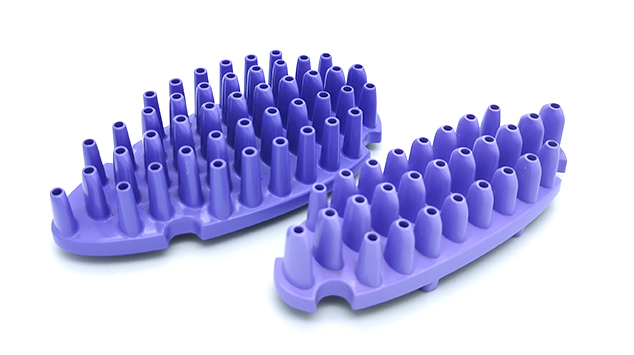Basic Performance Requirements of Die Casting Company For Mold Opening
With the continuous development of industrialization, the steel casting foundry has also made great progress along with this trend. The demand for mechanical products in the market is also increasing, which also drives the development of the whole steel casting industry. Steel casting products are mainly used in the manufacturing of mechanical equipment. Therefore, the manufacturer still needs to master a certain process for the processing of steel castings. What are the requirements of the manufacturer for molds?

Basic Performance Requirements of Die Casting Company
1. It has certain high temperature strength and toughness
The die-casting mold is easily deformed and even cracked by the high temperature, high pressure and thermal stress when molten metal is injected. Therefore, the mold material should have sufficient high-temperature strength and toughness and high hardness at the working temperature, which is the general and final requirement for die casting companies.
2. Excellent high temperature wear resistance, oxidation resistance and tempering stability
When high-temperature molten metal is injected into the mold at high speed and demoulded after casting, there will be a large friction effect. In order to ensure the long-term use of the mold, the mold should have high wear resistance at the working temperature. The large-scale continuous production die casting mold shall keep its high hardness under the action of a certain temperature for a long time, and shall not stick to the mold and produce oxide scale. Therefore, the mold should also have good oxidation resistance and tempering stability. For die casting companies, die sticking is to a large extent a high incidence area of defects.
3. Good thermal fatigue performance
The surface of die casting mold e is repeatedly heated and cooled at high temperature, and it expands and contracts continuously, resulting in alternating thermal stress. When the stress exceeds the elastic limit of the mold material, repeated plastic deformation will occur, resulting in thermal fatigue. At the same time, the surface of the die will be corroded and oxidized by the molten metal for a long time, which will gradually produce micro cracks. In most cases, thermal fatigue is the most important factor to determine the life of the die-casting mold. If the thermal fatigue problem is properly handled, the die casting company will not face the embarrassment of half of the orders and scrapping the mold.
4. High melt damage resistance
With the large-scale of the die casting machine, the die-casting pressure is also increasing, from 20-30Mpa at low pressure to 150-500mpa at high pressure. High temperature and high pressure casting can produce obvious melting damage, and the mold should have greater resistance to this. Therefore, the mold material must have a high temperature strength and a low affinity for molten metal. The mold shows that the roughness is small, and is attached with appropriate protective layers such as oxidation mold and nitride layer, without decarburization layer.
5. Good hardenability and small heat treatment deformation
The general manufacturing method of die casting mold is to carve the annealed mold material into the cavity and then heat treat it to obtain the required hardness, or heat treat the mold material first to obtain the required hardness and then carve the cavity. The manufacturing method of engraving the cavity first and then heat treatment has high hardness and strength, and is not easy to produce melting loss and thermal fatigue. No matter which method is used for heat treatment, it is necessary to obtain uniform hardness, so it is required to have good hardenability. Especially, the material with small heat treatment deformation should be used for heat treatment after engraving the mold cavity. This is particularly important for large-sized molds.
6. Good machinability and grindability
Die casting mold cavity is made by cutting, so the mold material should have good machinability. It must be pointed out that materials with good wear resistance generally have poor chipping performance. This is the case with many mold steels. Although they are in the annealed state, the base part is still relatively hard. With hard carbides, it is generally difficult to cut.
In order to obtain a smooth die casting, the surface roughness of the mold cavity is required to be small, so the mold material should also have good polishing performance.
7. The internal structure of the material is free of impurities and defects
The structure of the mold material should be uniform, free of defects, less directionality. If there are impurities, it will not only affect the crack, strength and thermal fatigue performance of the mold, but also affect the heat treatment deformation

